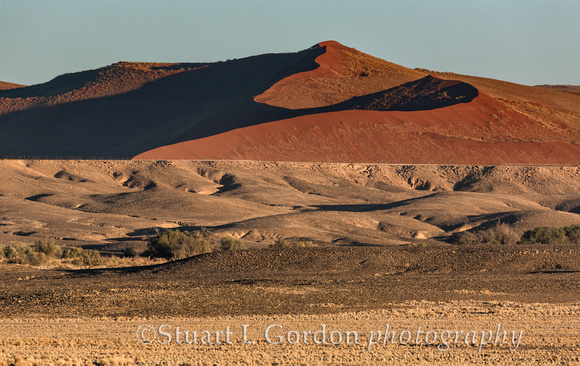Namibia_Nov032014_0303_04_05
I got a real charge out of this landscape composition because when I initially saw it, it looked like a composite of two separate landscape scenes stitched together in some Photoshop software. Truth of the matter is, it is not. I didn't have to rub my eyes, but I certainly did have to refocus. The horizon-type dividing line between the upper and lower parts of the image is the top of the lower plateau with a four-wheel drive/hiking trail on level part. The upper part of the image is a giant sand dune (among the largest in the world) inside Namib-Naukluft National Park near Sossusvlei, Namibia in southern Africa. Called the "Red Desert" for the color of the sand (related to high content of iron oxides), scientists say it is perhaps the oldest desert in the world, estimated to have formed more than 250 million years ago. The process is ongoing, with sands blowing in from the neighboring Kalahari Desert literally swallowing up entire mountain ranges. It is truly a wonder of the world.


